Common supermarket mistakes
For many of us, our parents have always been domestic gods and goddesses who can suss out the best quality groceries. Now that we’re all grown up and doing our own grocery runs, we’ve made our own supermarket mistakes and faced the reality that it takes experience to pick the right items while considering shelf life and trying to save money.
From getting fruits that will never ripen to buying poor choices of meat and fish, here are 11 common supermarket mistakes amateurs make when shopping for fresh meat, vegetables and dairy at supermarkets.
Check out other similar articles here:
- Common kitchen mistakes only rookie cooks make
- Common mistakes first-time parents make when caring for their baby
- Common hair washing mistakes
- Longest-lasting vegetables to buy
– Meat –
1. Buying meat first
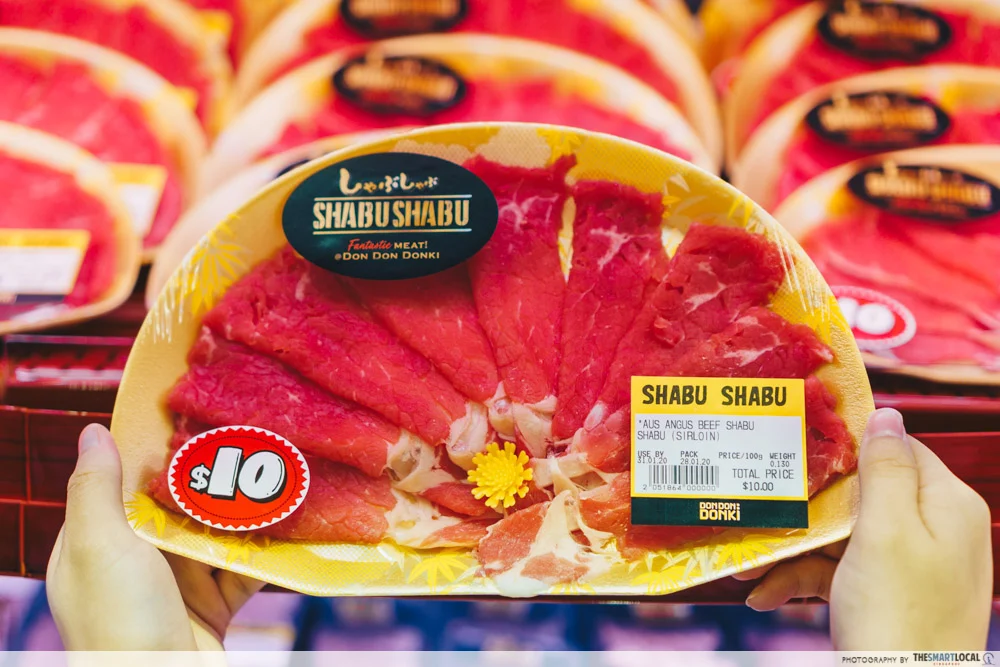
Just like watching a series or following a skincare routine, there’s an order to how you should be doing your grocery shopping. If you have a full list of items to grab, let meat be your last stop before hitting the cashier.
This is because the longer the amount of time your meat spends in room temperature, the higher the chances of bacteria growing on it. And when there’s more bacteria on the meat, its lifespan becomes shorter, even if it’s kept in the fridge.
2. Not inspecting the meat and sell-by date
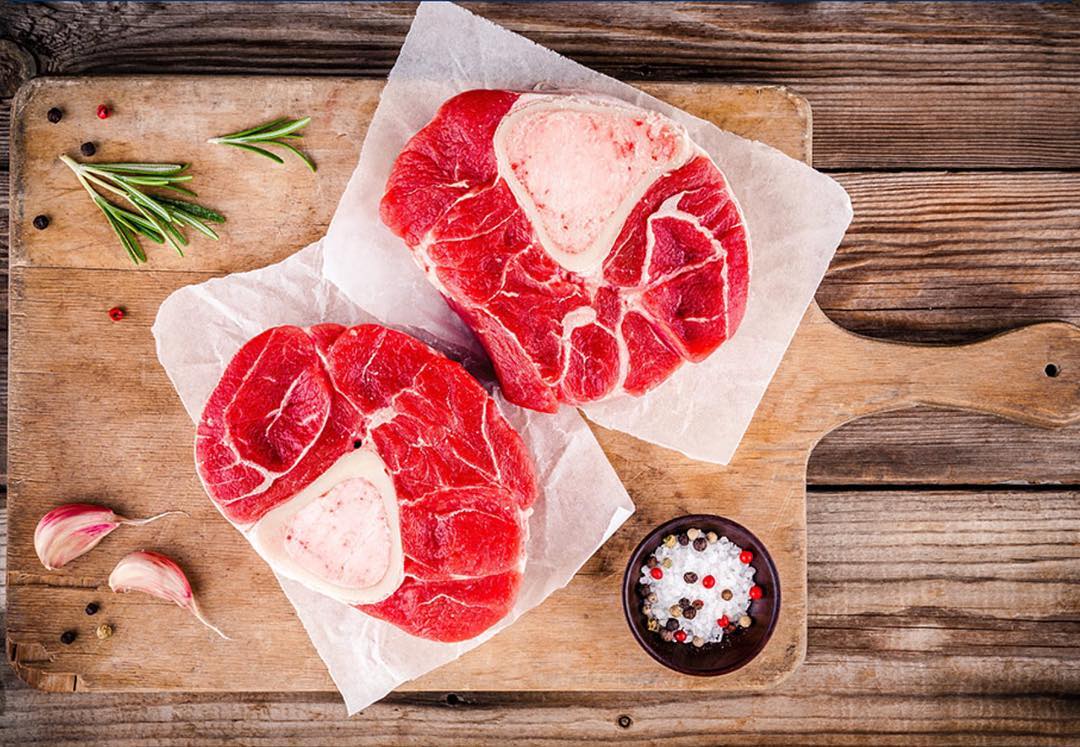
Image credit: @goldenvalleyindustries
When you finally arrive at the meat section, don’t just pick up the first packet of chicken, beef or fish you lay your eyes on. Most of us wouldn’t leave a store with a brand new phone without inspecting it first and this should especially apply to food.
Red meats like beef have to be, well, red, while pork is more pink in colour – that means no weird brown spots which are telltale signs that the meat is about to go bad. Also, make sure to pick those with no excess liquid pooling in the packaging because too much juice means it wasn’t properly stored.
Check the sell-by date too, to make sure you get meat that isn’t reaching the end of its shelf life.
Tip: Supermarkets follow the first in, first out rule – find newer stocks at the back and older ones at the front.
3. Skipping on frozen fish

Image credit: Kelman Chiang
By default, we make a beeline for slabs of fresh fish laid out on ice in supermarkets. There’s nothing wrong with this since the fish usually come straight from our local fish farms. But if the fish you’re picking from is mixed with imported ones, this means it could have been days before the fish landed on the ice after being caught.
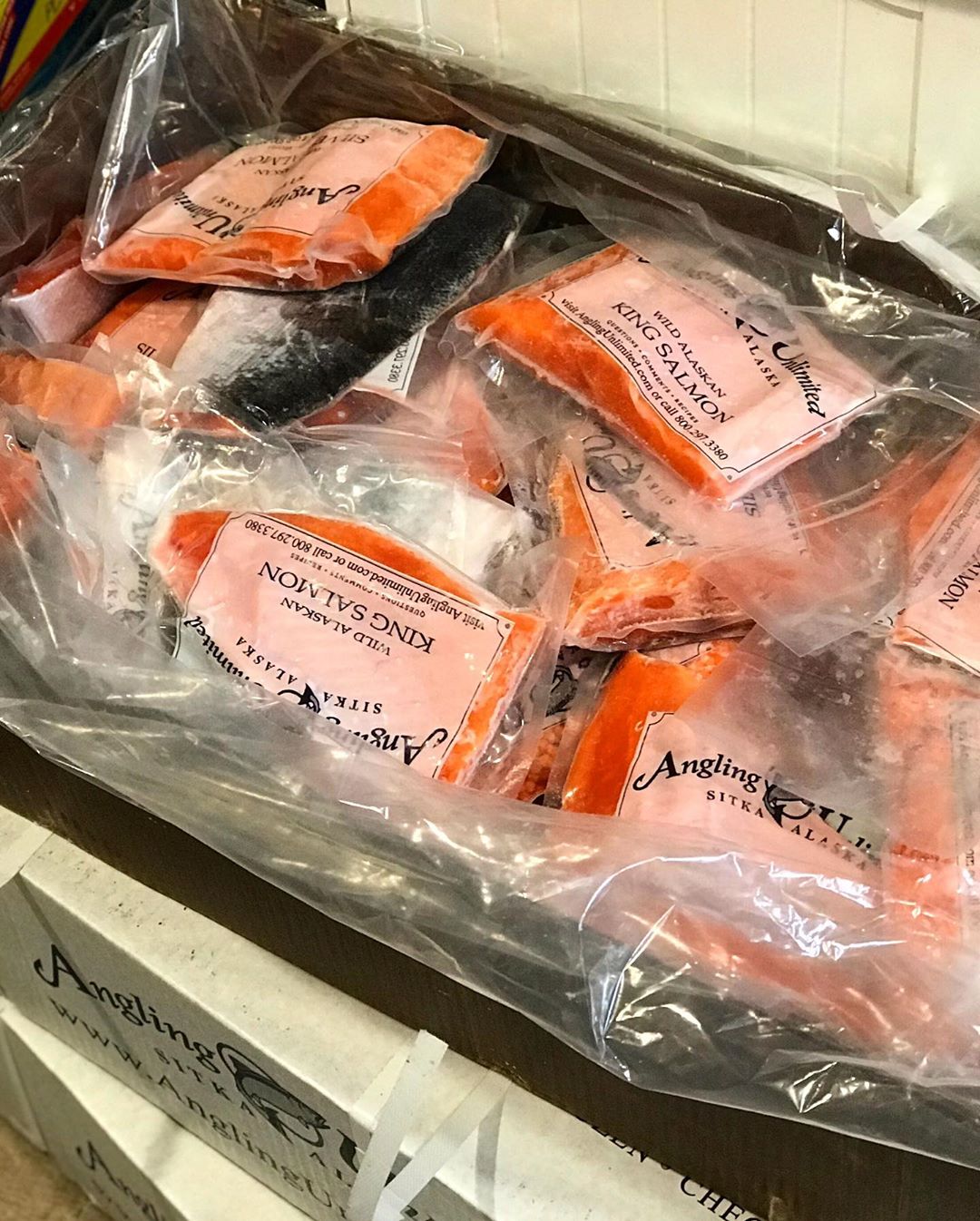
You’ll spot these beauties in vacuum-sealed packaging or with a thick glaze of ice.
Image credit: @story_seller
Those looking for the freshest fish out there might be surprised to know that you’ll find it in the frozen seafood section instead. Flash frozen fish are quickly frozen in extremely low temperatures right after being caught to ensure maximum freshness and to seal in nutrients.
Don’t confuse this with “fresh frozen” or “frozen fresh” because the former is just like using a freezer to slowly freeze the fish, so it’s not as fresh. While you’re at it, avoid those labelled “thawed” or “previously frozen” as they have shorter shelf lives. The fish should also have clear eyes and no liquid in the packaging.
4. Not taking advantage of free services

Image credit: @1fish2fishoutdoors
Buying fish is one thing but some don’t know that you can ask the staff at the supermarket to help with things like descaling and filleting. If you’re an inexperienced cook or just don’t have a good handle on fish, it’s best to take full advantage of the free services offered at the supermarket lest you ruin a perfectly good fish.
Even if you can do it yourself, it’ll still cut down on your prep time at home so there’s no harm done.
– Fruits and vegetables –
5. Avoiding produce with spots or specks
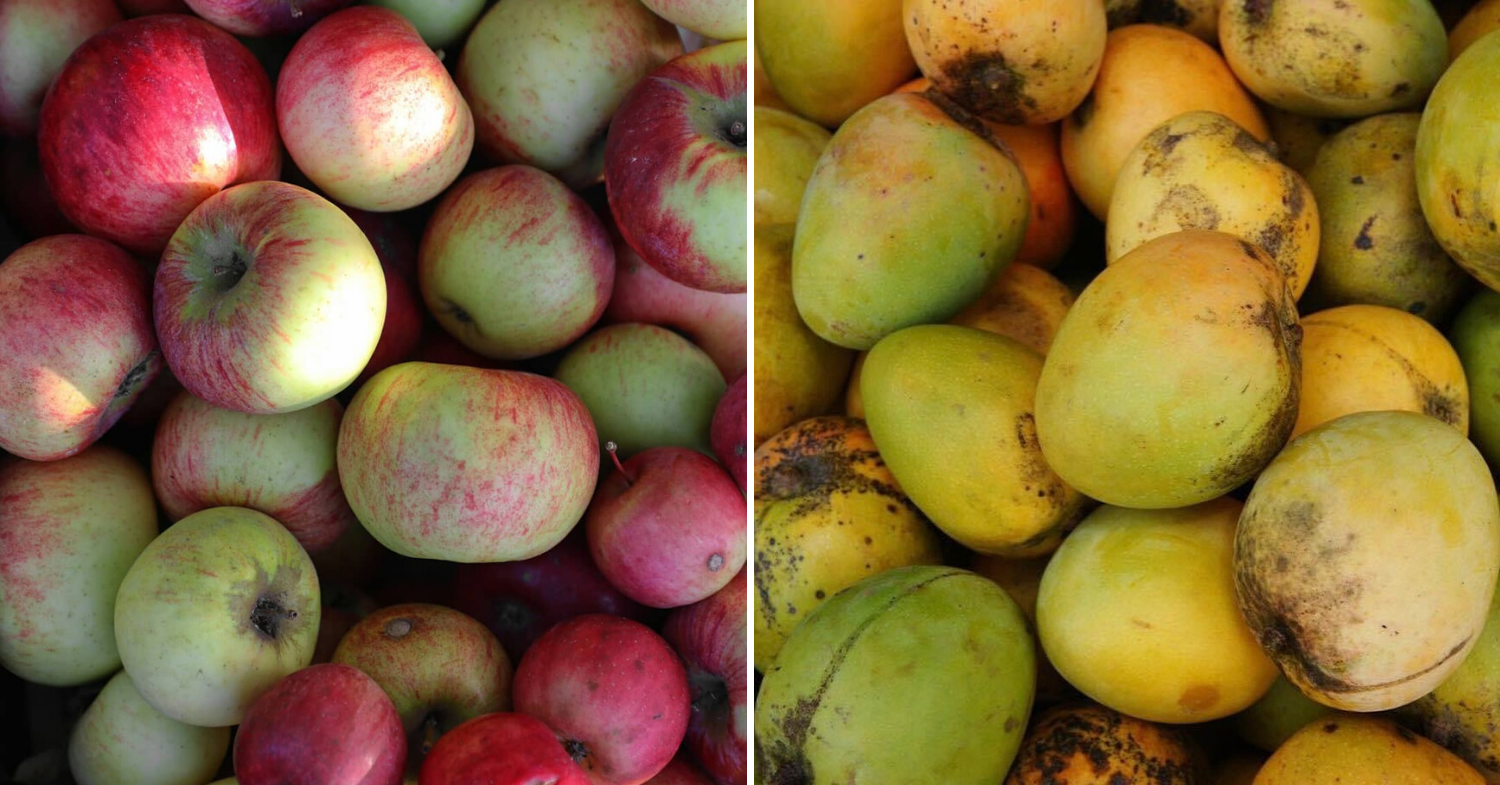
Image adapted from: @the_strusiel & @nicecreamhopkins
Most of us are guilty of supermarket mistakes like this – avoiding fruits and veggies with little natural spots or specks. We’re like Snow White drawn to the shiny, red and unblemished apple.
But the truth is, the aesthetics of fresh produce are often manipulated by manufacturers to make them look more visually pleasing. When fresh produce looks unnaturally spotless, it’s usually because of wax or pesticides that make them look shiny and fresh.
To avoid these chemicals, pick up produce that actually has a few specks here and there because that means it was grown as naturally as possible unlike those that look too perfect.
6. Choosing fruits that are too unripe
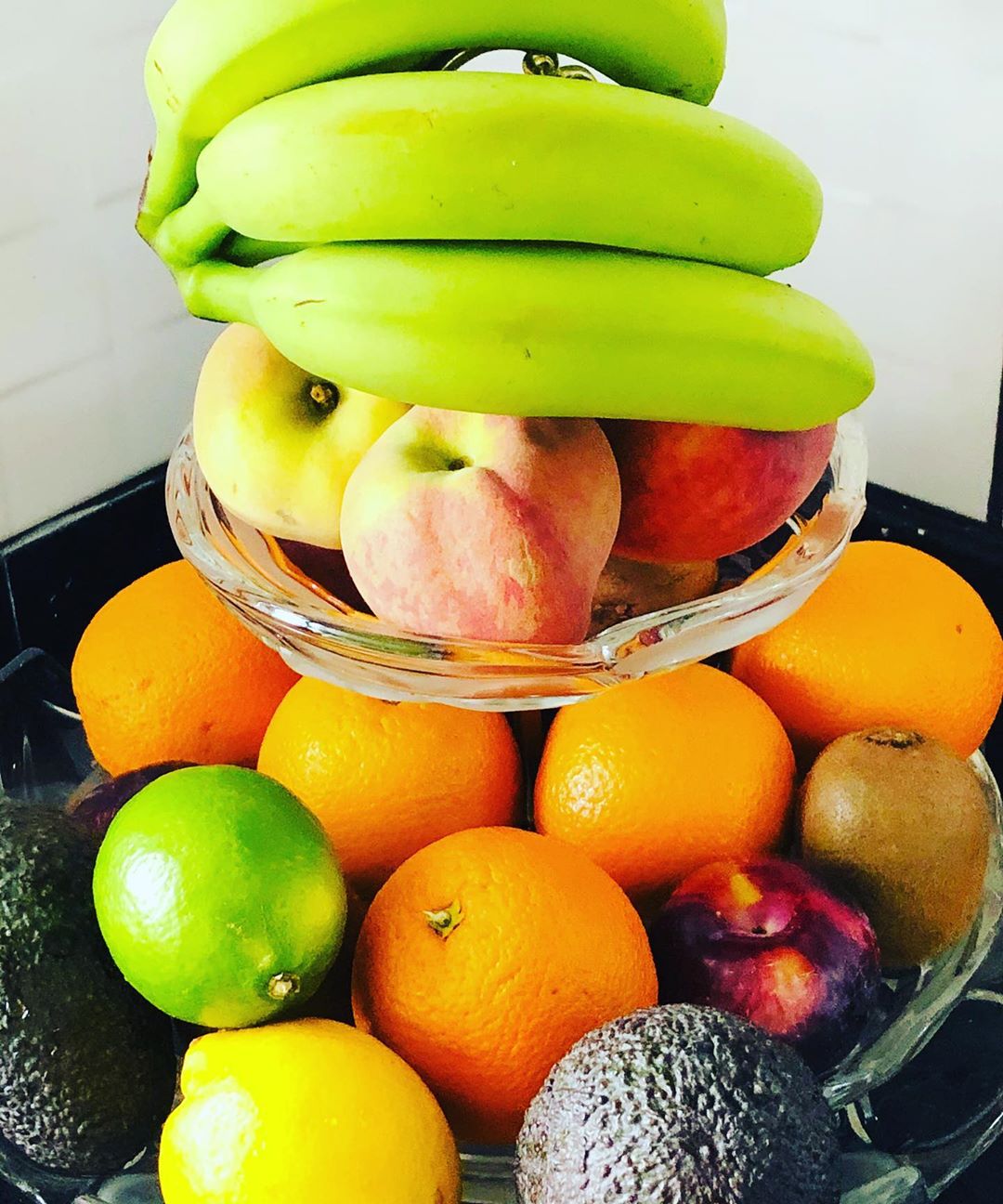
Image credit: @reall_y_mi
It makes sense to get fruits that have yet to ripen to buy time before we have to consume them. But this should only be done for fruits that continue to ripen on their own like bananas and peaches.
On the other hand, fruits like strawberries, raspberries and pineapples that are picked prematurely will never ripen properly, meaning there’s a high chance it won’t be sweet.
So it’s important to know which fruits will ripen on their own and are therefore okay to bulk buy for the week and which ones should only be bought when ready to eat. Here’s a list you can follow:
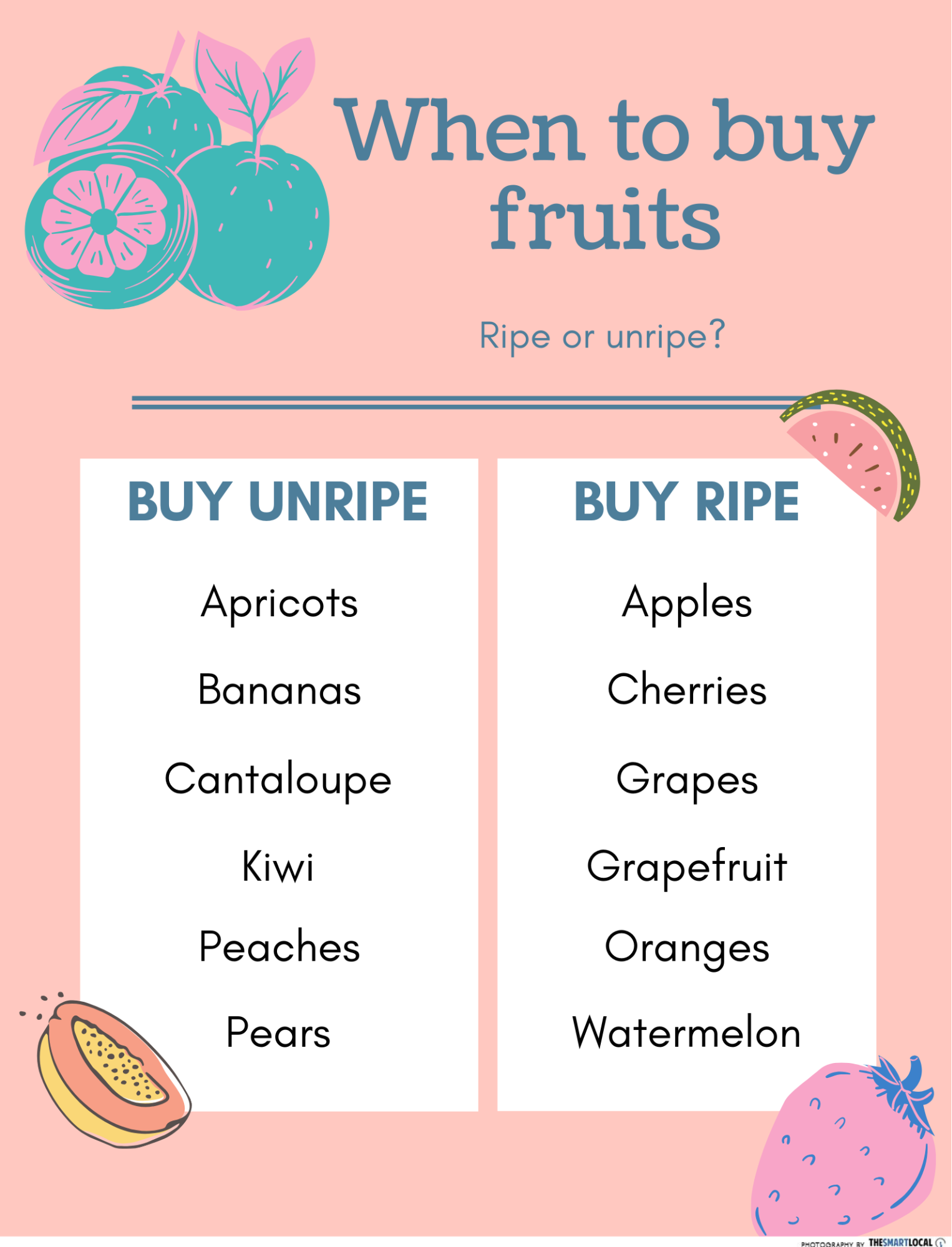
7. Buying out of season
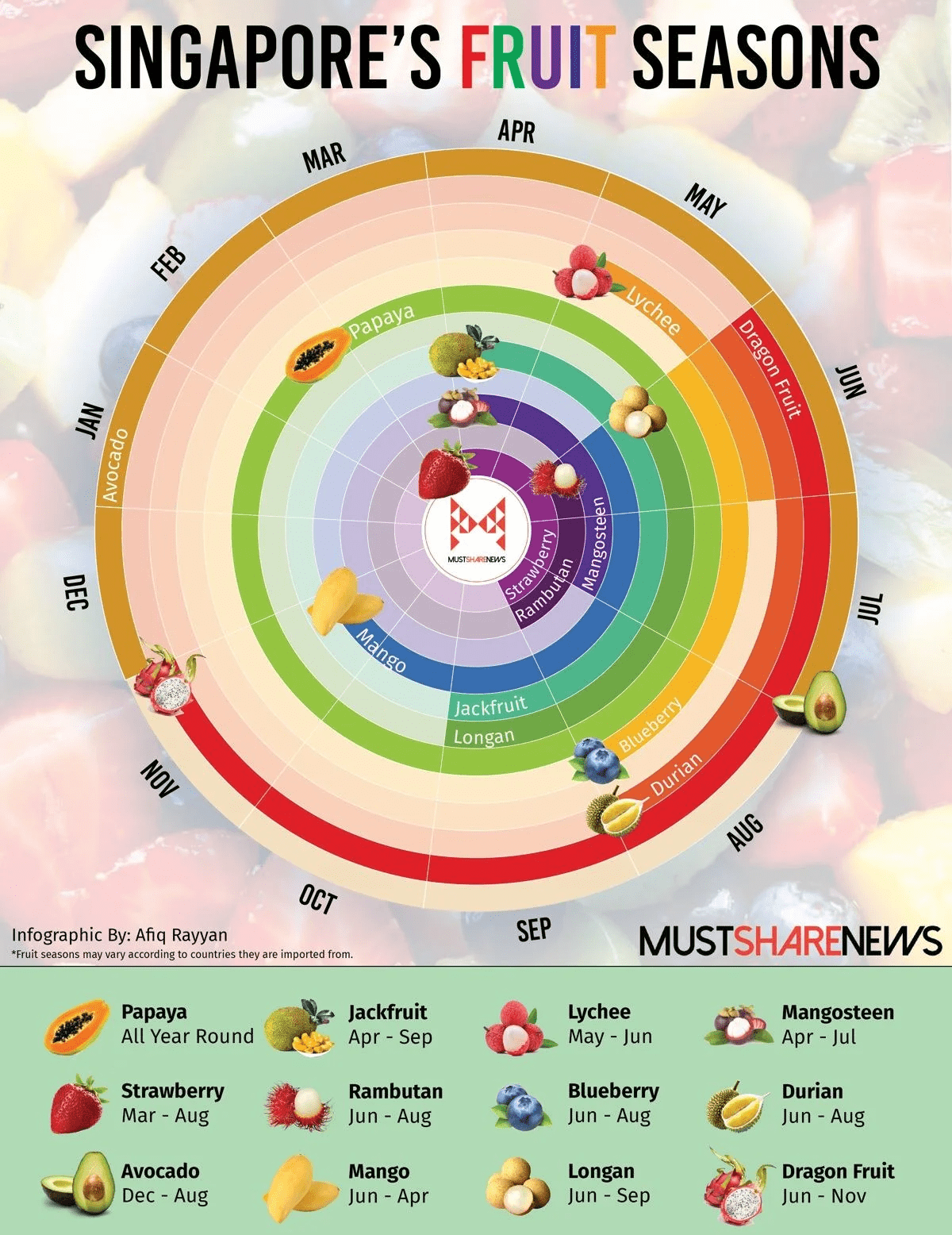
Image credit: Mustsharenews
We’re all familiar with the abundance of durian stalls between June to September every year when you can smell them before you even spot them. And just like durians, other fruits have seasons too. It’s important to know when these are for different types of fruits to avoid spending unnecessarily.
For example, blueberries can cost up to $9.90 off-season compared to ~$5 when they’re in season. During off-seasons, look for canned substitutes of your choice of fruits like pineapples, lychees and peaches. If the fruits you like don’t typically have canned versions, substitute them accordingly with others that are in-season instead.
8. Buying produce that goes bad quickly in bulk
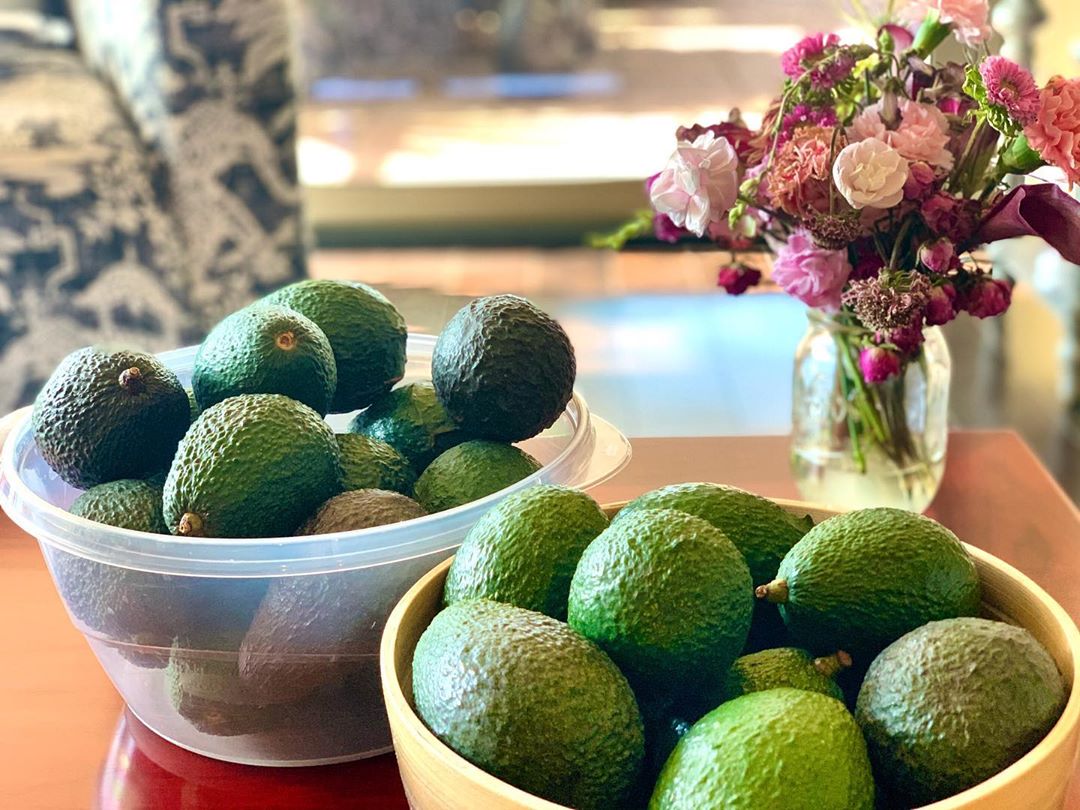
Image credit: @emmieoh
It’s pretty common even for experienced grocery shoppers to buy too much of what they need, especially now that enhanced measures are in place. When it concerns highly perishable goods like the notorious avocado, broccoli, spinach, and strawberries, buying too much often results in the food items going bad before we have a chance to consume them.
So, even though it’s very tempting to buy more than we need to enjoy that 10 for $10 deal, we should stick to what we need to avoid waste and unnecessary stress. Unless, of course, you have a large family with many mouths to feed.
– Dairy products –
9. Not checking cost per unit
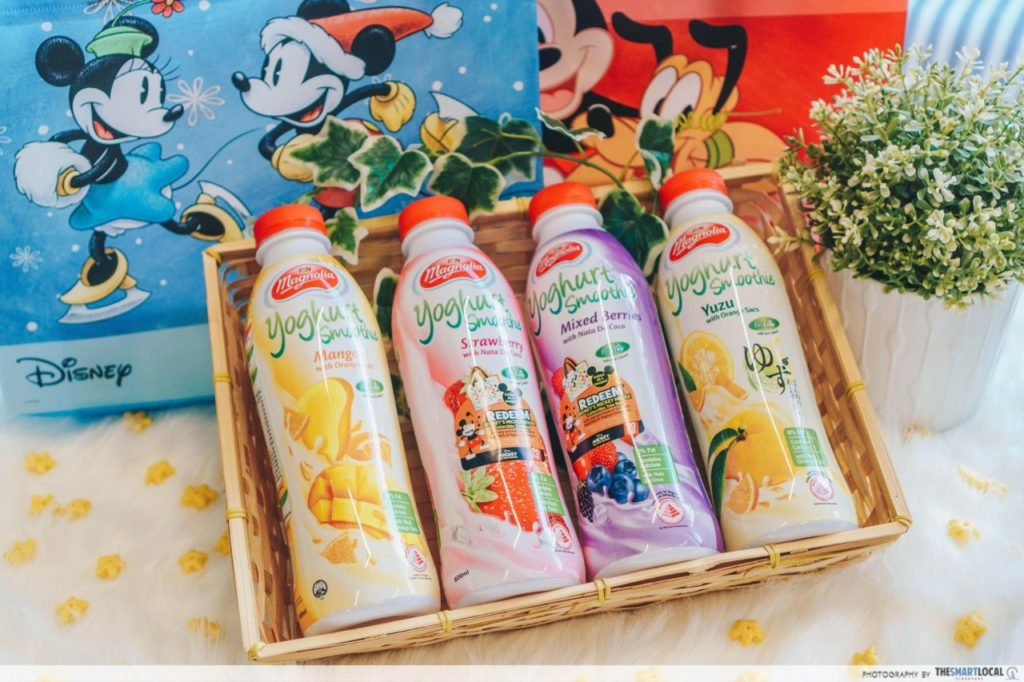
Another way shops get us to spend more is by offering bundle deals that we can’t resist. When we think of bundles, we usually associate getting more items for a cheaper price. But make a comparison between bundles and standalone items, and you might realise it’s more worth it to skip the bundle.
Take for example, the below:
- 2 cartons of 275ML milk cost $5, which totals to ~$0.009/ML
- 1 carton of 500ML milk costs $3.50, which totals to ~$0.007/ML
The difference in numbers may seem minute, but it can rack up your savings in the long run. Be sure to check the price difference versus the quantity of a product between different brands while you’re at it.
10. Getting milk in translucent containers
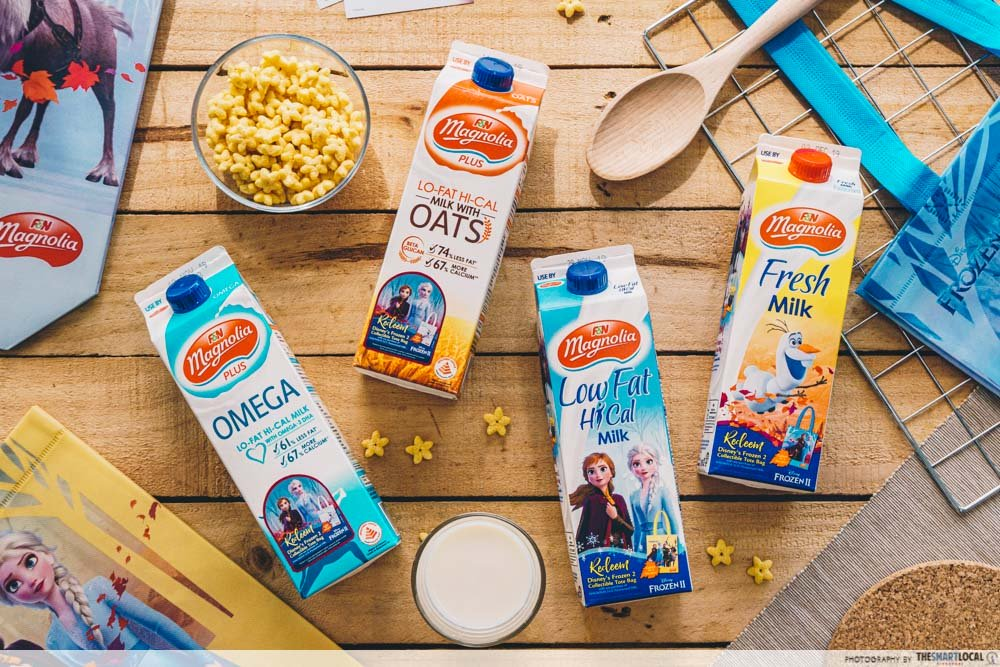
The container milk comes in may seem like a trivial matter but it can make a difference to its shelf life. Milk that comes in translucent jugs will spoil faster than those in opaque containers like cartons. This is because light can penetrate translucent containers, which will cause the nutrients in the milk to break down faster, and make it taste “off” quicker.
So next time you pick up milk for your cereal, opt for those in cartons especially if your family takes a while to finish it.
11. Avoiding no-name or “cheaper” brands
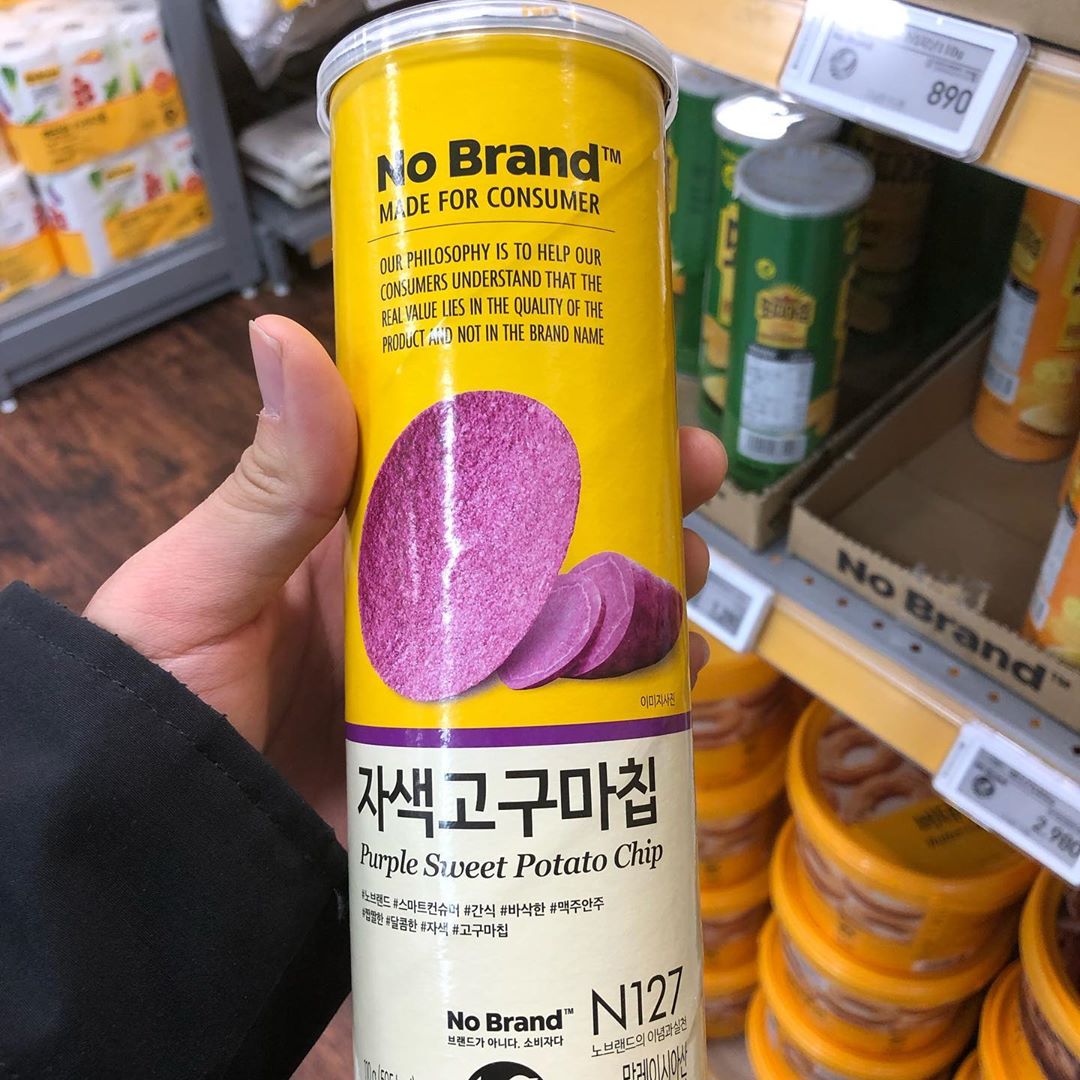
Image credit: @ohmiahbad
Some of us are familiar with stretching every dollar and opting for no-name or supermarket brands during grocery runs. Besides saving money, there’s actually some wisdom in choosing cheaper brands for basic items like milk, cheese, and butter.
Most of the time, these no-brand items taste the same and have the same nutritional value as branded items. Even blind taste tests done by researchers over the years have proven this. So the myth that no-brand items are of poorer taste and quality has well been debunked.
Supermarket mistakes when shopping
Even if we never learned seemingly minor details like this when grocery shopping, it’s never too late to familiarise ourselves with them now. If you keep these common supermarket mistakes in mind the next time you head to the supermarket, you can avoid unnecessary waste, save money in the long run and get the most out of your purchases.
Check out other related articles here:
- Online grocery stores with fresh produce delivery
- Instant supermarket deliveries to help you skip physical queues
- Supermarket Foods Under $10 That Can Atasify Your Dishes For Cheap
Originally published on 20th May 2020. Last updated by Jessica Lai on 17th May 2021. Cover image adapted from: @ohmiahbad & @mrsneighns

Drop us your email so you won't miss the latest news.









